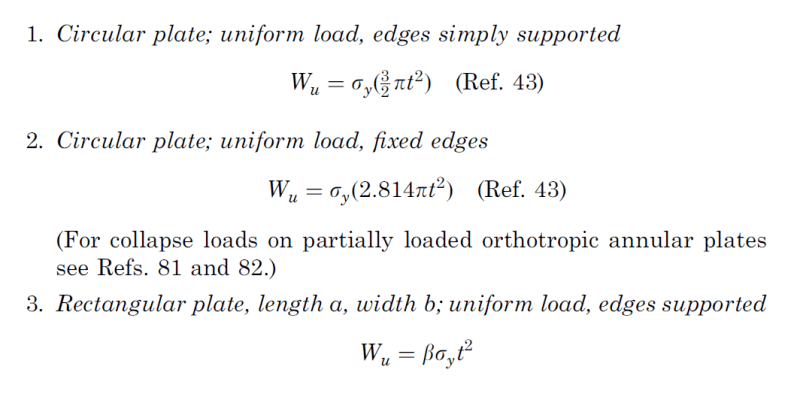I have a square plate that is simply supported on 4 edges and has a load in the middle over a small cut out.
I calculate the max stress as per table 11.4 case 1b.
All is good till now but i am not sure what to compare it with. should i compare with Fy of the plate (yield strength)? or Fu of the plate (ultimate tensile strength)? or a factor times the ultimate strength?
is there a chapter in the AISC or CISC that gives those values for plates.
Sorry if this is a dumb question.
Thanks,
I calculate the max stress as per table 11.4 case 1b.
All is good till now but i am not sure what to compare it with. should i compare with Fy of the plate (yield strength)? or Fu of the plate (ultimate tensile strength)? or a factor times the ultimate strength?
is there a chapter in the AISC or CISC that gives those values for plates.
Sorry if this is a dumb question.
Thanks,


